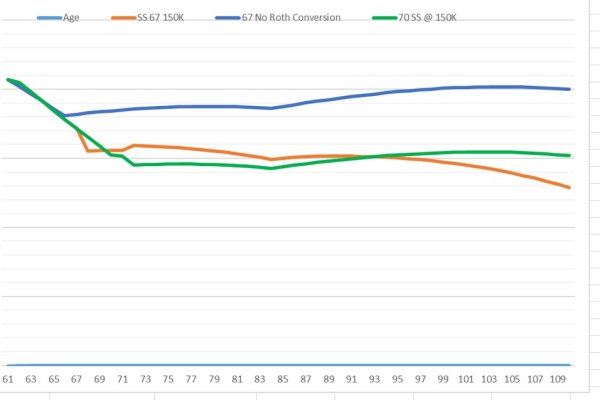Romer
Recycles dryer sheets
The total value of my liquid assets. It sums up my accounts; IRA, 401K, Roth, Savings, CDs
so it plots the value of my money over time against the age at the bottom for the 3 scenarios
SS at 67 with no Roth Conversions
SS at 67 with Roth conversions to top of 22% Tax Bracket
SS at 70 with Roth conversions to top of 22% tax bracket
All plotted using the same starting expense escalated every year. Includes a calculation of federal and state taxes as part of expense. Includes RMDs in Tax for expense and unused post tax RMDs go into after tax savings
so it plots the value of my money over time against the age at the bottom for the 3 scenarios
SS at 67 with no Roth Conversions
SS at 67 with Roth conversions to top of 22% Tax Bracket
SS at 70 with Roth conversions to top of 22% tax bracket
All plotted using the same starting expense escalated every year. Includes a calculation of federal and state taxes as part of expense. Includes RMDs in Tax for expense and unused post tax RMDs go into after tax savings

